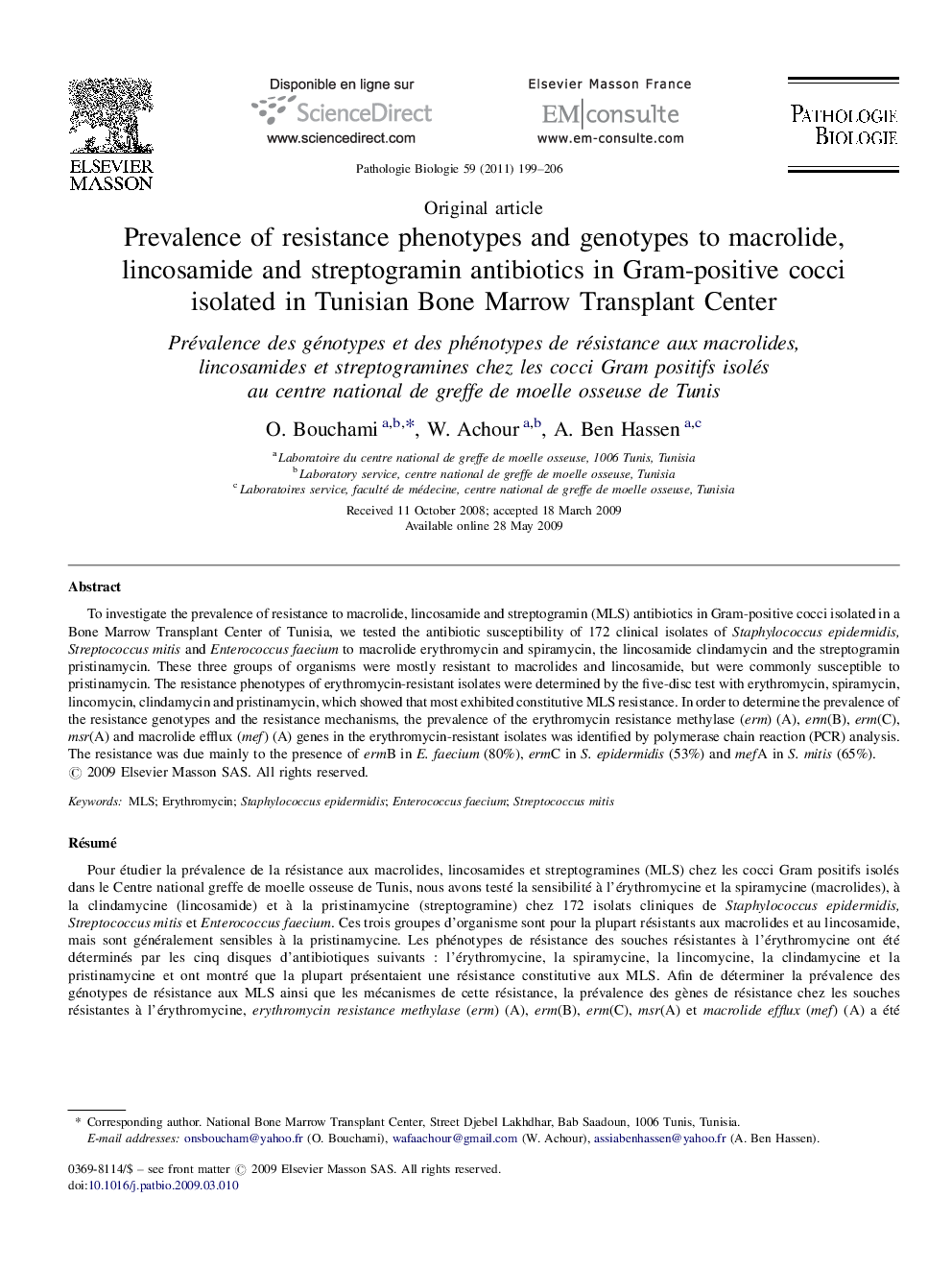| کد مقاله | کد نشریه | سال انتشار | مقاله انگلیسی | نسخه تمام متن |
|---|---|---|---|---|
| 4136222 | 1271903 | 2011 | 8 صفحه PDF | دانلود رایگان |

To investigate the prevalence of resistance to macrolide, lincosamide and streptogramin (MLS) antibiotics in Gram-positive cocci isolated in a Bone Marrow Transplant Center of Tunisia, we tested the antibiotic susceptibility of 172 clinical isolates of Staphylococcus epidermidis, Streptococcus mitis and Enterococcus faecium to macrolide erythromycin and spiramycin, the lincosamide clindamycin and the streptogramin pristinamycin. These three groups of organisms were mostly resistant to macrolides and lincosamide, but were commonly susceptible to pristinamycin. The resistance phenotypes of erythromycin-resistant isolates were determined by the five-disc test with erythromycin, spiramycin, lincomycin, clindamycin and pristinamycin, which showed that most exhibited constitutive MLS resistance. In order to determine the prevalence of the resistance genotypes and the resistance mechanisms, the prevalence of the erythromycin resistance methylase (erm) (A), erm(B), erm(C), msr(A) and macrolide efflux (mef) (A) genes in the erythromycin-resistant isolates was identified by polymerase chain reaction (PCR) analysis. The resistance was due mainly to the presence of ermB in E. faecium (80%), ermC in S. epidermidis (53%) and mefA in S. mitis (65%).
RésuméPour étudier la prévalence de la résistance aux macrolides, lincosamides et streptogramines (MLS) chez les cocci Gram positifs isolés dans le Centre national greffe de moelle osseuse de Tunis, nous avons testé la sensibilité à l’érythromycine et la spiramycine (macrolides), à la clindamycine (lincosamide) et à la pristinamycine (streptogramine) chez 172 isolats cliniques de Staphylococcus epidermidis, Streptococcus mitis et Enterococcus faecium. Ces trois groupes d’organisme sont pour la plupart résistants aux macrolides et au lincosamide, mais sont généralement sensibles à la pristinamycine. Les phénotypes de résistance des souches résistantes à l’érythromycine ont été déterminés par les cinq disques d’antibiotiques suivants : l’érythromycine, la spiramycine, la lincomycine, la clindamycine et la pristinamycine et ont montré que la plupart présentaient une résistance constitutive aux MLS. Afin de déterminer la prévalence des génotypes de résistance aux MLS ainsi que les mécanismes de cette résistance, la prévalence des gènes de résistance chez les souches résistantes à l’érythromycine, erythromycin resistance methylase (erm) (A), erm(B), erm(C), msr(A) et macrolide efflux (mef) (A) a été déterminé par polymerase chain reaction (PCR). La résistance est principalement due à la présence des gènes, ermB chez E. faecium (80 %), ermC chez S. epidermidis (53 %) et mefA chez S. mitis (65 %).
Journal: Pathologie Biologie - Volume 59, Issue 4, August 2011, Pages 199–206